EXHIBITION EXHIBITORS
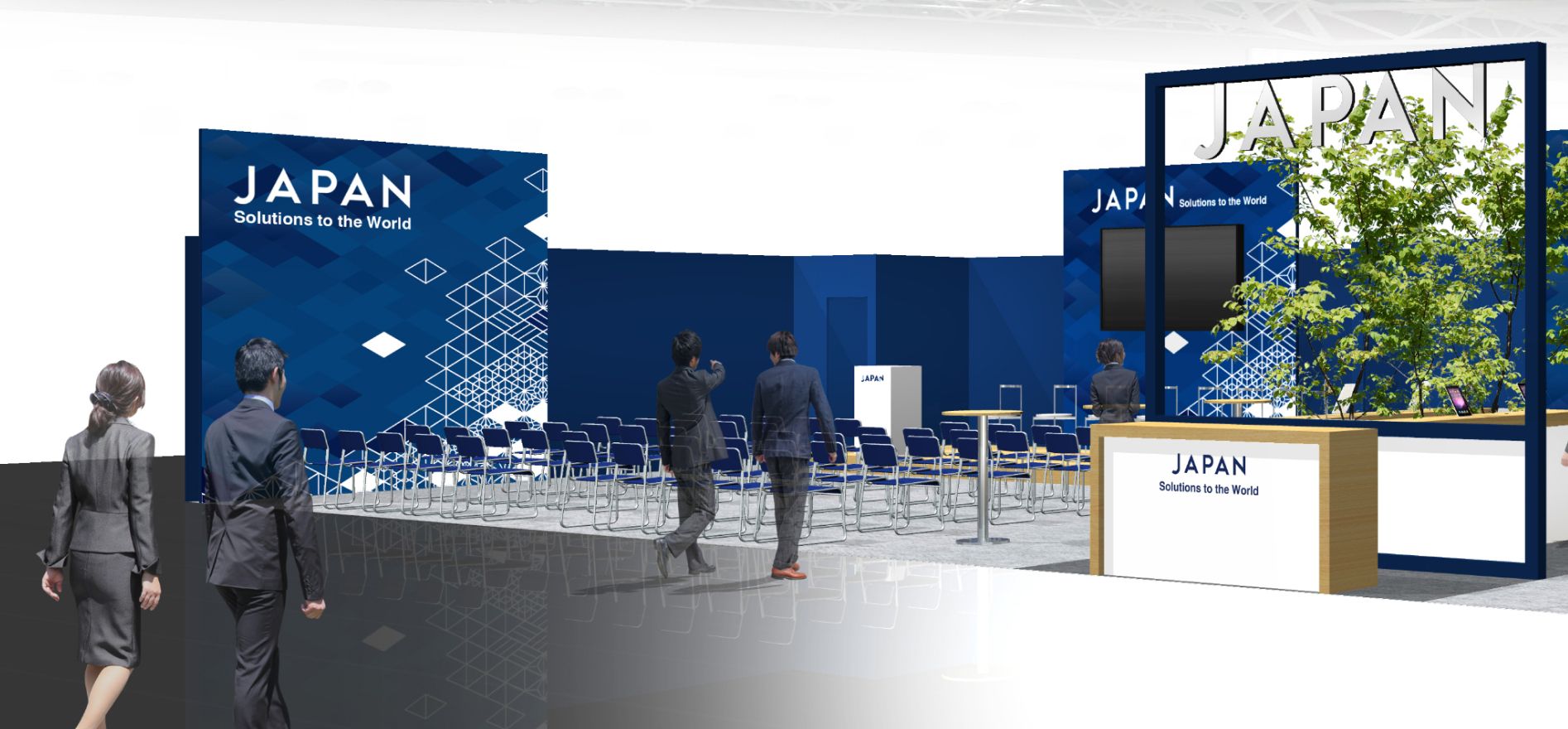
Introducing decarbonization technologies and efforts that support the realization of carbon neutrality by 2050 , global decarbonization and climate change adaptation which are the long-term goals for the climate change measures in Japan.
EXHIBITORS
- Japan Aerospace Exploration Agency (JAXA)
- SPACECOOL Inc.
- Ministry of Agriculture, Forestry and Fisheries
- TAISEI CORPORATION
- Toshiba Corporation / Toshiba Energy Systems & Solutions Corporation
- Mitsubishi Heavy Industries, Ltd.
- JFE Engineering Corporation
- JGC HOLDINGS CORPORATION
- Panasonic Holdings
- Hitachi, Ltd.
- Office for Fukushima Regeneration Project
Detailed Category
Adaptation
-

Satellites and Remote-sensing technology for Climate Change monitoring
JAXA's efforts to understand sink and sources of Greenhouse Gases by satellites will be presented.
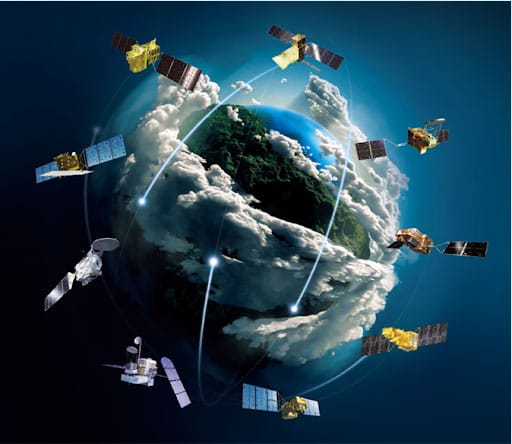
JAXA began satellite Earth observation in the 1980s, and over the years has acquired data on the global environment, including land areas such as forests, which are sinks for GHGs; ocean areas such as polar sea ice and sea surface temperature; and the atmosphere such as carbon dioxide and methane.
Currently, JAXA is operating six satellites. The satellite provide information using long-term, wide-area observation data, which is one of the satellite's features, and will contribute to providing scientific evidence in the Global Stocktake process. In addition, since the satellite conducts global observations, it will also provide scientific evidence on emissions in the realization of a "decarbonized society" in each country and region. -

Radiative Sky Cooling Material "SPACECOOL"
Delivering natural coolness in a safe, electricity-free way for all over the world.
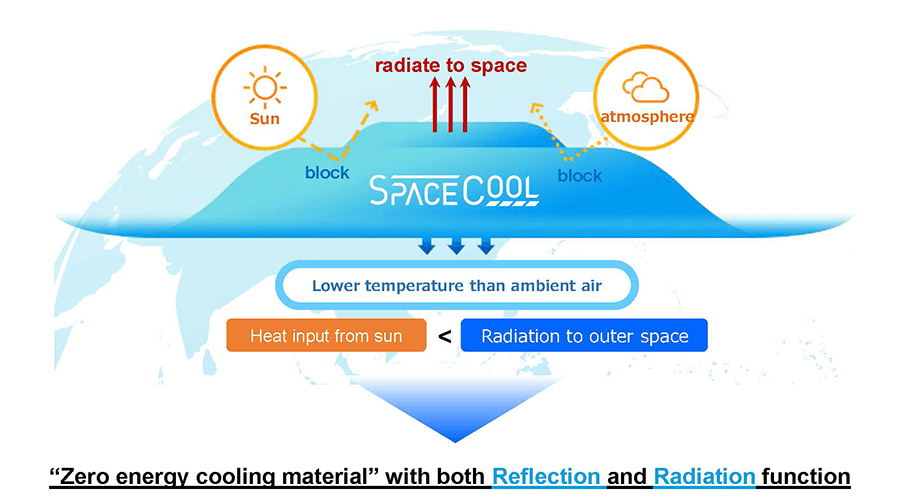
Concept of Radiative sky cooling material 
Left:SAPCECOOL_Film / Right:SPACECOOL_Membrane SPACECOOL®, a zero-energy radiative sky cooling material, uses optical control technology to suppress heat input from sunlight while releasing heat into outer space through an atmospheric window, thereby maintaining temperatures below ambient air even under direct sunlight without consuming any energy. When used in living and transportation spaces, it reduces the environmental burden caused by air conditioning and creates comfortable spaces by controlling internal temperatures. In this exhibition, we are showing the effects of SPACECOOL as a measure against energy conservation and global warming, such as a 20% improvement in cooling efficiency in a prefab house, and propose solutions for "heat" using tents made of our materials and our products to prevent heat stroke.
-

Climate resilience-agriculture and Food security projects by Ministry of Agriculture, Forestry and Fisheries
Through various activities in agriculture, forestry, and fisheries, we contribute to reducing CO2 emissions, achieving food security, and improving nutrition.
The African region is strongly affected by climate change, and the practice of agriculture adapted to climate change is an important issue. In addition, achieving food security is also an urgent issue in the wake of the recent crisis in Ukraine.
Ministry fo Agriculture, Forestry and Fisheries is building sustainable food and agriculture systems through the establishment of food value chains in the African region, as well as developing climate change-adapted varieties and agricultural practices, and will introduce MAFF's efforts to those interested in food and agriculture.
Utilization
-

Realization of CCUS with concrete&Energy- Generating exterior system
Environmentally friendly concrete that carbon-negative & exterior system that achieves efficient solar power generation functions on the walls and windows.

Carbon-Recycled Concrete: “T-eConcrete®/Carbon-Recycle” enables to take in a large amount of CO₂ and make the CO₂ balance of concrete negative. 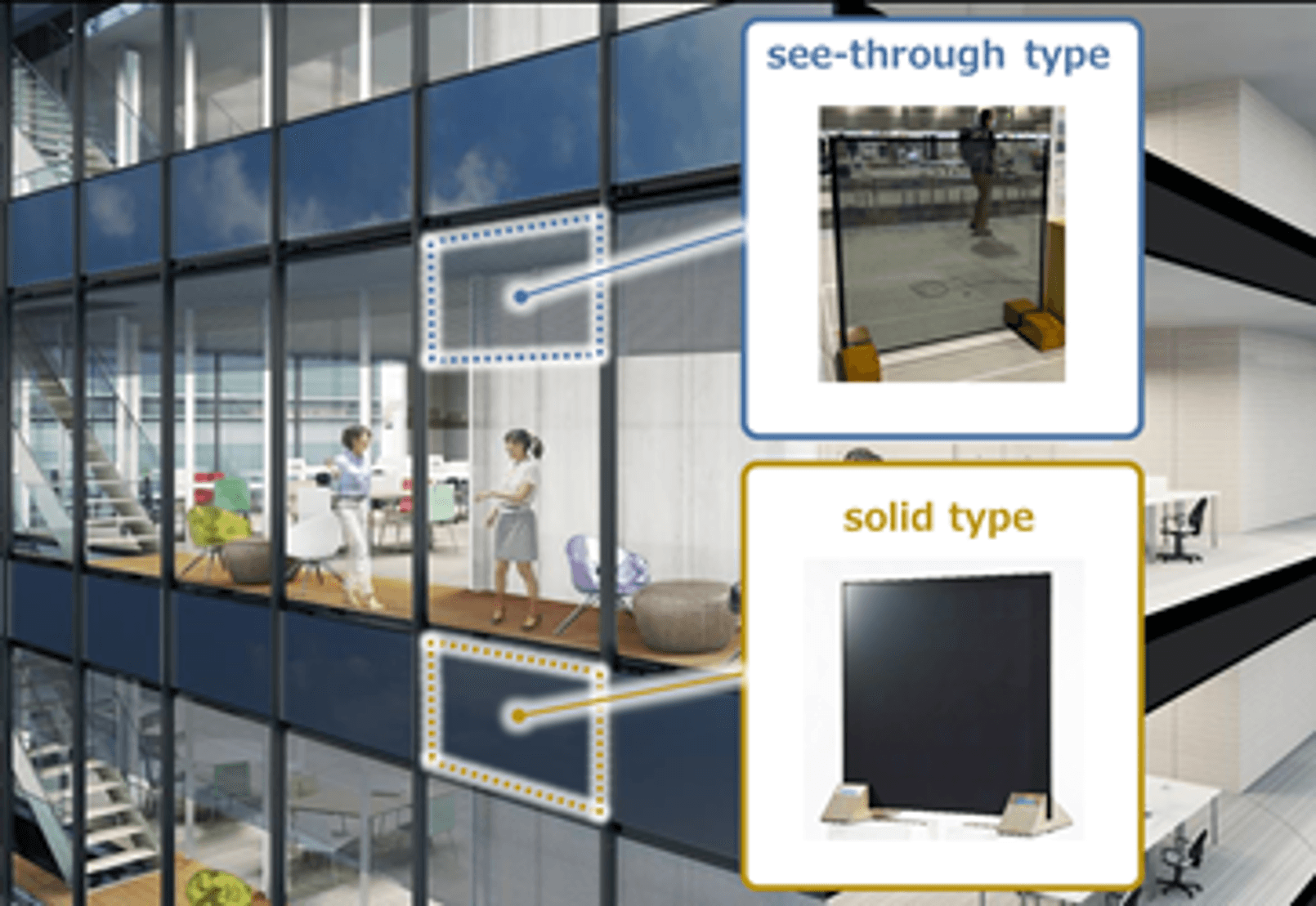
T-Green® Multi Solar See-through type offers daylighting with power generation Solid type offers outstanding design Our Carbon-Recycled Concrete, prepared with calcium carbonate produced by reacting calcium with CO₂ captured from the atmosphere and the exhaust gases as well as large amount of ground granulated blast furnace slag, an industrial by-product, has achieved carbon-negative.
While this concrete maintains the same strength and workability as ordinary concrete, we have been able to prevent rebars from being corroded and to secure the durability of building structures, thus our Carbon-Recycled Concrete can contribute to the early realization of carbon neutrality.Buildings located in the urban metropolitan areas usually have small rooftop areas, and as a result the capacity of power generated by solar photovoltaic panels installed there is limited. On the other hand, we also have an issue that, from the design perspective, it is also limited to install solar photovoltaic panels onto large-scale facades of the buildings. Therefore, Taisei Corporation and Kaneka Corporation have jointly developed the building integrated photovoltaics panel "T-Green Multi Solar" with an excellence in design that can be installed on facades (window and wall surfaces) with great power generation potential, and we continue our contribution to the improvement of the Energy Generation of the buildings.
-

Power to Chemicals (P2C): Converting CO₂ into valuables with CO₂ electrolysis
Toshiba Group aims to realize carbon neutrality through social implementation of technologies that convert CO₂ into valuable products

Circular carbon society model through CO₂ Recycling 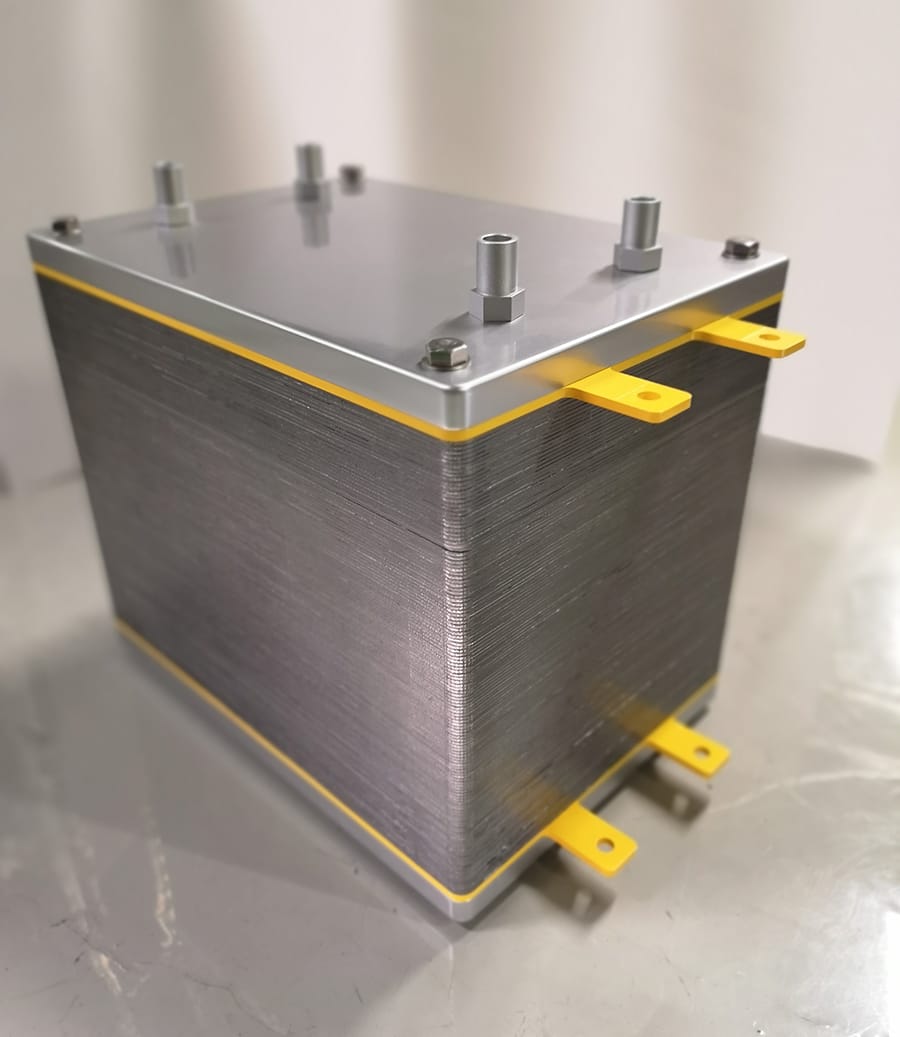
CO₂ electrolysis full-stack model with more than 100 cells stacked (exhibit) Realizing carbon neutrality requires technology that makes effective use of the CO₂ we cannot eliminate.
One example is the aviation industry’s growing need for sustainable aviation fuel (SAF) to align with the global decarbonization movement.
Toshiba Group is advancing development and social implementation of P2C: the use of renewable energy and hydrogen to convert CO₂ into valuable chemicals.
Supported by Ministry of the Environment, Government of Japan, we are developing a practicalscale CO₂ electrolyzer that produces CO, a raw material for chemical products.
Our artificial photosynthesis technology delivers the world‘s highest conversion rate,and capacity increases will be secured by stacking cells and applying fuel cell manufacturing technology.
Toshiba Group aims to produce SAF, while considering wider applications, such as e-fuels and chemical products.Lightweight, Compact, High-Power Superconducting Motor: Contributing to the decarbonization of the mobility industry
Replacing fossil fuel engines with superconducting motors to power large mobility vehicles and boosting zero emissions!
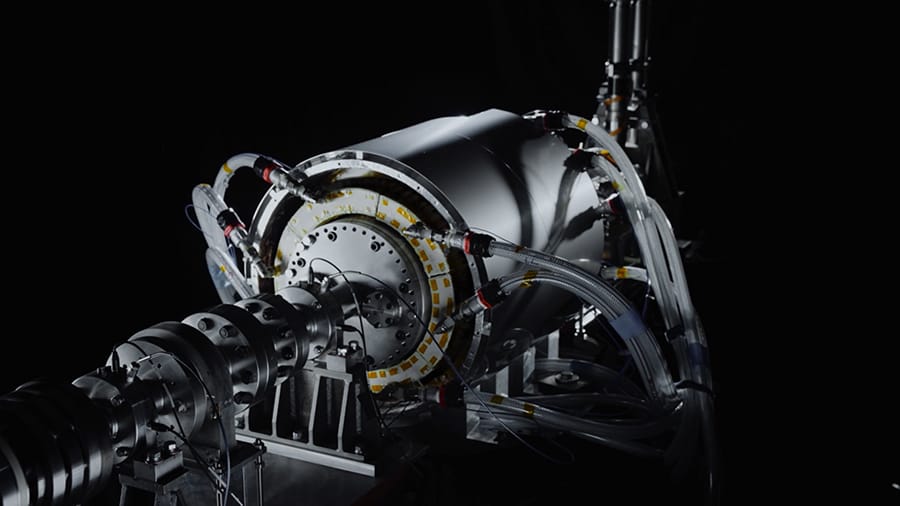
Lightweight, Compact, High-Power Superconducting Motor Prototype 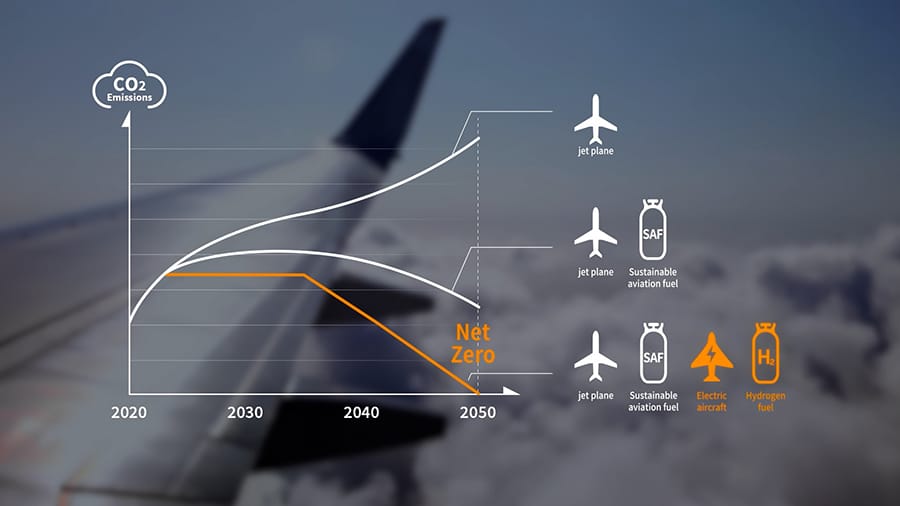
To achieve net zero in the aviation industry, not only SAF but also hydrogen fuel and electrification are essential. The mobility industry is accelerating moves toward CO₂ reductions. For instance, the aviation industry is looking at using sustainable aviation fuel (SAF) in order to become carbon neutral by 2050. But fuel alone is not enough. Aircraft systems as whole must evolve.
Toshiba Group has applied its long-cultivated superconducting and manufacturing technologies to a high-speed rotating machine. The result is a prototype for the world's first lightweight, compact, high-power superconducting motor, with high-speed rotation and a maximum output of 2 MW. It is less than one-tenth the weight and size of a conventional motor. We will contribute to a carbon-neutral society by reducing the weight and accelerating efforts for implementation.
-

MHI contributes to the building of carbon neutrality by social implementation of a hydrogen ecosystem.
Development and social implementation of a hydrogen power generation ecosystem are underway to reduce CO₂ emissions worldwide.
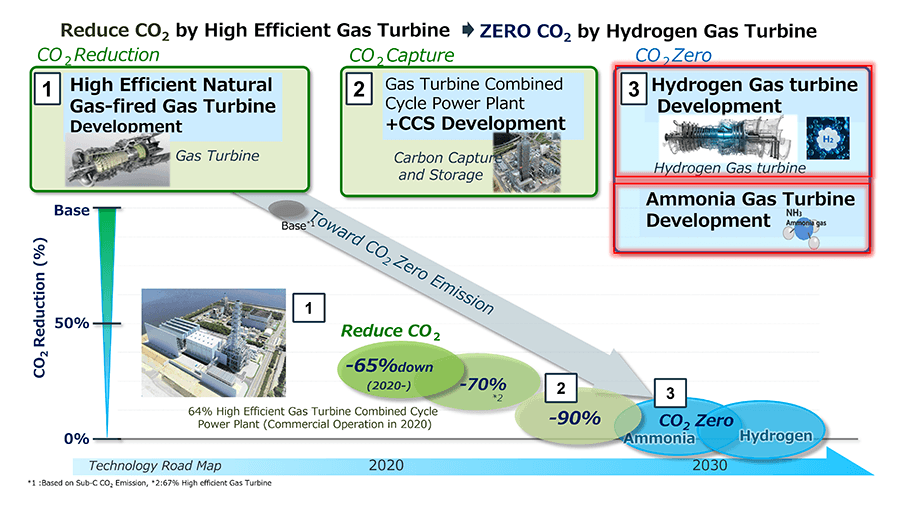
MHI's thermal power roadmap for a carbon neutral 2050
Step 1:Efficiency improvements and reduction of fossil fuels used in thermal power generation
Step 2:Carbon capture and utilization in thermal power generation
Step 3:Carbon free power generation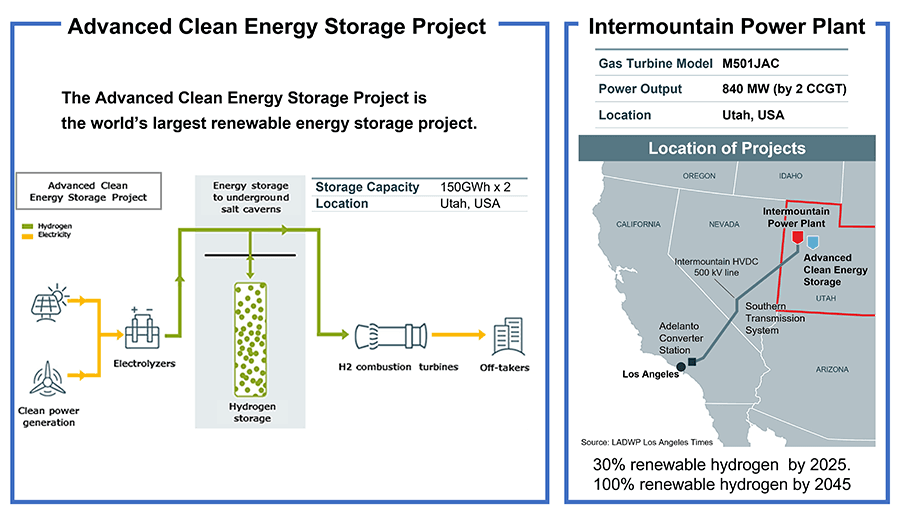
Illustrative picture of Intermountain Power Plant + Advanced Clean Energy Storage PJ MHI has various low-carbon and decarbonization technologies to ensure a smooth energy transition all over the world. One of the ultimate technologies is a hydrogen gas turbine.
The development of 30% hydrogen co-firing has already been completed, 50% co-firing has been successfully tested, and 100% firing will be verified by 2025. Based on these validation results, we will promote the social implementation of hydrogen power generation worldwide.
For example, in Utah, United States, we are participating in the Advanced Clean Energy Storage Project, which stores green hydrogen in salt caverns and supplies the hydrogen to gas turbines depending on electricity demand and supply. Through these PJs, we will build an integrated hydrogen ecosystem from production to storage, supply and utilization.
Mitsubishi Heavy Industries Group approaches to CCUS Value Chain
Contributing carbon neutrality by connecting CCUS environmental values with technologies and digital platform
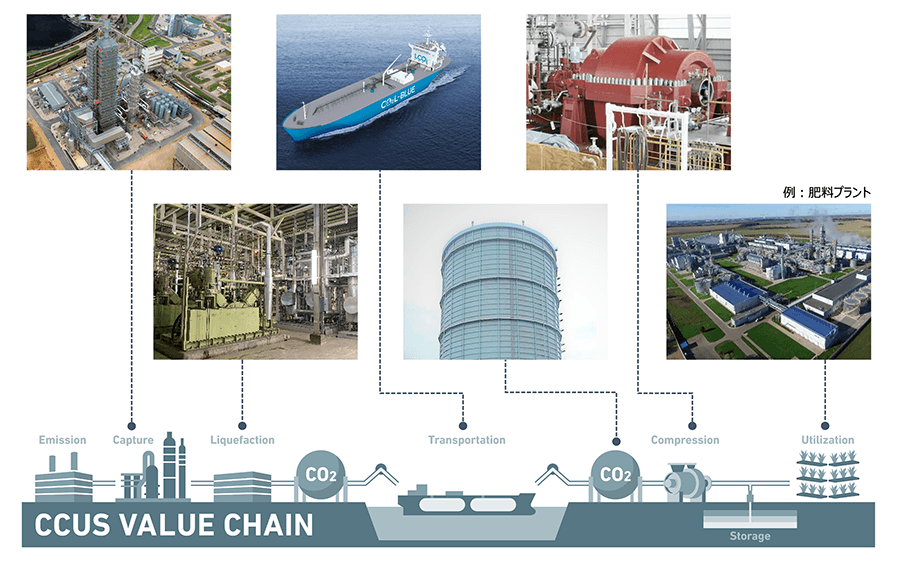
MHI Group's technologies and know-how realize to establish CCUS value chain 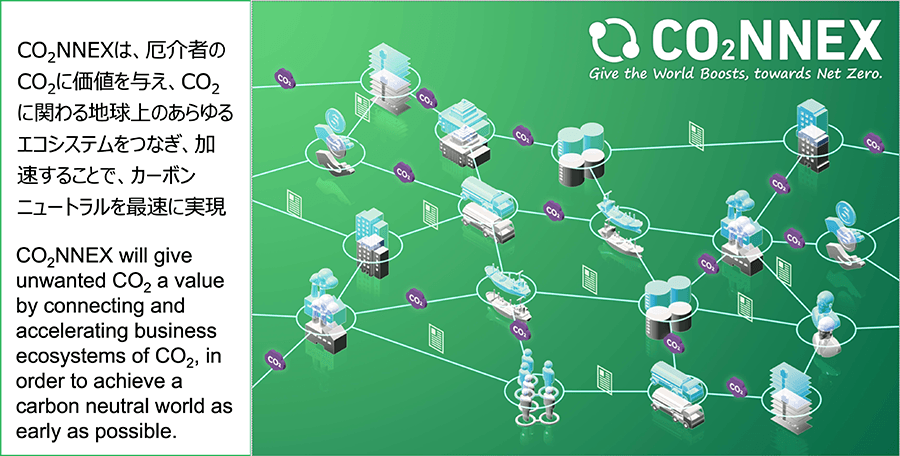
CCUS Value Chain Visualization Digital Platform:CO₂NNEX To realize carbon neutrality, there is a need to simultaneously reduce and capture emitted CO₂.
We need effort to reduce amount of CO₂ by various methods. However, some industrial fields will be hard to reach a point of zero CO₂ emission to sustain our economy and society.
It is for the reason that actions is required in containing the emitted anthropogenic CO₂ through technology. Specifically, the development of CCUS value chain is essential.
MHI Group has neccessary technologies for CCUS, including capturing, transporting and compressing CO₂. In addition, CO₂NNEX as a digital platform collaborated with IBM will also accelerate the establishment of CCUS value chain.By these solutions, MHI group aims to help achieve "NET ZERO" under our vision of "Solving CO₂ for Good".
Mitigation
-

Waste Management Solution towards Carbon Neutrality and Circular Economy
To achieve carbon neutrality, we contribute waste management and environmental protection for the earth and people.

Expected completion image of BacNinh Waste to Energy project 
Groundbreaking ceremony of BacNinh Waste to Energy project Sanitary and appropriate waste disposal and management is an urgent issue in many countries, including developing countries. Waste to Energy is not only treats waste hygienically, but also enables to generat electricity utilizing the waste heat during processing. This technology helps break away from power generation using fossil fuels, and can also contribute to stabilizing the concentration of GHG, which is the ultimate goal of the United Nations Framework Convention on Climate Change.
Compared to other renewable energy technologies, the amount of CO₂ reduction per project is large, and in the example of a JCM adopted project, an estimated annual GHG emission reduction of approximately 41,804 t-CO₂/eq is expected due to the waste treatment of 500 tons per day.
-

Production of locally produced and consumed low-carbon hydrogen from plastic waste
Contribute to building a hydrogen society by providing locally produced and consumed low-carbon hydrogen economically through the advanced usage of plastic waste

Building a hydrogen society with low-carbon hydrogen derived from plastic waste 
EUP provided by JGC Group Hydrogen production from plastic waste will provide solutions to the issues of plastic waste and low carbon hydrogen supply with the following advantages.
- Prevent environmental pollution caused by plastic waste
- Substitute fossil resources as feedstock for hydrogen production and reduce GHGs emissions.
- Minimize the cost of infrastructure for hydrogen transportation
- To produce hydrogen economically thanks to the income of tipping fee and recycling fee.
- Further decarbonization can be achieved by combination with CC(U)
SThe EUP provided by the JGC Group is the only technology in the world with a long-term commercial operation track record in the gasification and chemical recycling of plastic waste, enabling stable treatment of plastic waste and efficient production of chemical feedstock and hydrogen.
-

Redesign the economy and society using hydrogen towards the realization of carbon neutrality.
Panasonic to Begin Operating H2 KIBOU FIELD Demonstration Facility Utilizing Pure Hydrogen Fuel Cell Generators

H2 KIBOU FIELD (photographed in April 2022) Panasonic has begun operations at its new H2 KIBOU FIELD facility on April 15, 2022. This facility was built as a demonstration of a Panasonic renewable energy solution, known as RE100 (Renewable Energy 100%), in which 100% of the power used for site operations is generated from renewable resources; it is part of a self-sustaining power system that combines generation from both pure hydrogen and solar sources. This is the first such demonstration in the world to make full-scale use of hydrogen fuel cells toward a 100% renewable energy manufacturing site.
Panasonic has built a large demonstration facility at its Kusatsu site in Shiga Prefecture, equipped with a power generation system that combines 99 5-kW pure hydrogen fuel cell generators (495 kW) and photovoltaic generators (approx. 570 kW) as well as lithium-ion storage batteries (approx. 1.1 MWh) for storing surplus power. The power generated by this system will fully power the fuel cell factory in Kusatsu site. Panasonic will continue to develop and test other technologies to optimize power supply and demand management.
-

Hitachi Aims for a Sustainable Society Balancing Environment and Human Wellbeing
As a Climate Change Innovator, we lead GX and help society and customers reduce CO₂ by about 100 million tons / year*


Using Green, Digital, Innovation as growth drivers, we leverage our Social Innovation Business to balance environmental needs with human wellbeing. As a Climate Change Innovator, we support mitigation of/adaptation to climate change.
We will achieve carbon neutrality throughout our entire value chain by 2050 and support decarbonization of customers from various sectors. We can realize a sustainable society through a DX cycle covering everything from consulting to system construction, operation and maintenance. These are our 4 approaches:
- Mass introduction of non-fossil-fuel power enabled by more resilient grids
- Spread of carbon-free smart mobility
- Stable green energy by integrated electricity & hydrogen
- Carbon circulation (capture & recycling)
*FY2024 target. Base year FY2013.
Fukushima
-

11 years have passed.
Fukushima, to the next environment stage.11 years have passed since the Great East Japan Earthquake.
We will introduce Fukushima “today”, where evacuation orders are lifted and initiatives for reconstruction are underway.
The Great East Japan Earthquake and Nuclear Disaster Memorial Museum 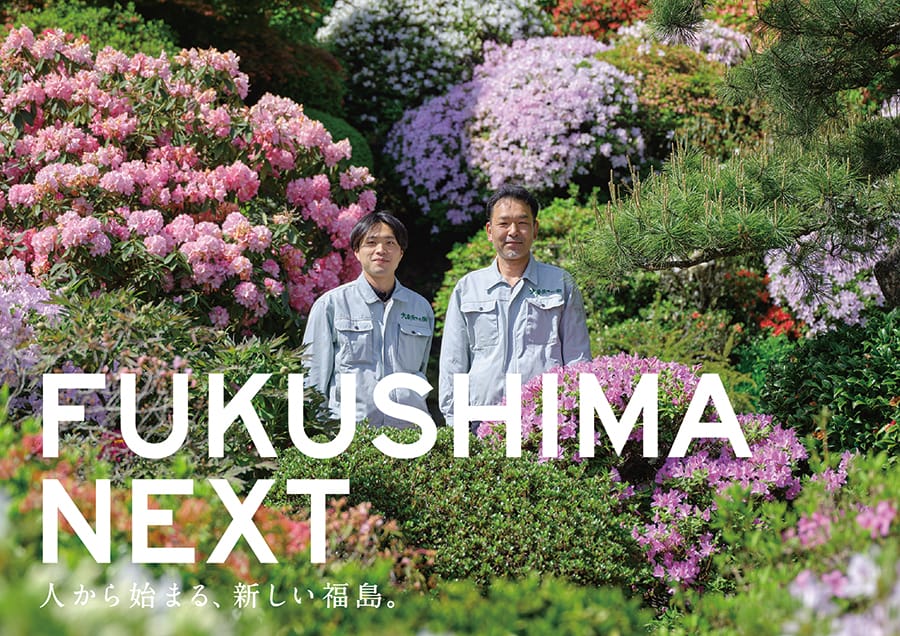
"FUKUSHIMA NEXT" Fukushima environmental rebranding campaign Tomioka Town Azalea Regeneration Project The Great East Japan Earthquake and the accident at Tokyo Electric Power Company’s Fukushima Daiichi Nuclear Power Station released large amounts of radioactive substances into the environment, forcing many residents to evacuate.
During the past 11 years, with the warm and continuous support of many people, the Ministry of the Environment has worked for decontamination and environmental restoration on a scale and with methods that are unprecedented in the world. The evacuation orders are being steadily lifted and preparation of sites for new town development is underway.
Communities are recovering from the disaster, and are working to create a sustainable society through means such as active introduction of renewable energy. This is bringing communities back to their former activity and giving birth to new communication centered in Fukushima.
